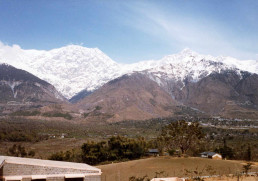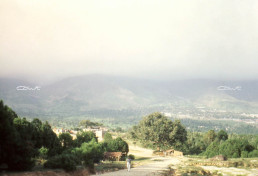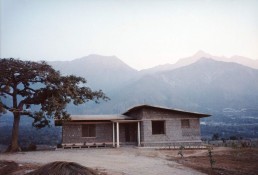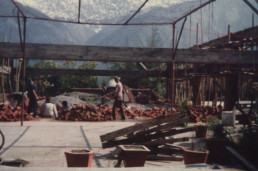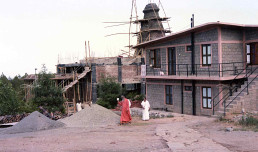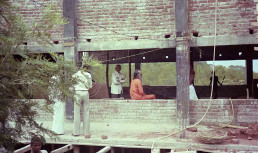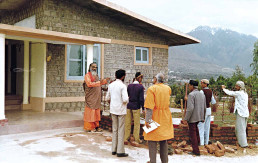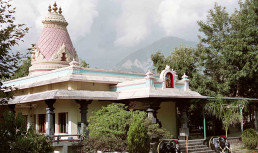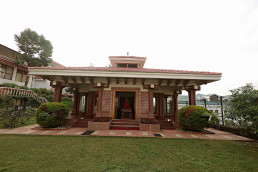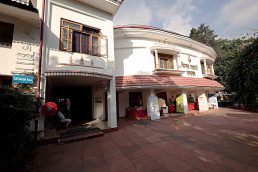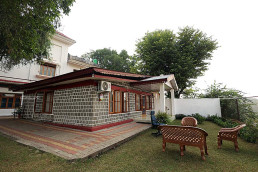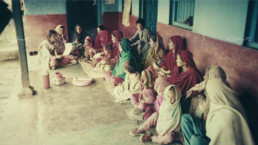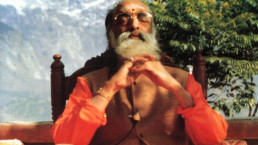When we visit Sidhbari today, it is hard to imagine the unapproachable land that it was in the 1970s. Swami Chinmayananda’s vision made that metamorphosis in the mountains happen. The way the ashram has grown with the wholehearted teamwork of devotees reflects the purity and power of Pujya Gurudev’s sankalpa. Year after year, new buildings and facilities were added.

When we visit Chinmaya Tapovan Sidhbari today, it is hard to imagine the barren, unapproachable land that it was in the 1970s. Pujya Gurudev’s vision made that metamorphosis in the mountains happen. And the way the ashram has grown with the diligent, wholehearted teamwork of devotees of all backgrounds and talents reflects the purity and power of Pujya Gurudev’s sankalpa. Pujya Gurudev embedded in the growth many remarkable memories and lessons for all of us.
All the ventures undertaken, from the divine landmarks to the accommodating facilities and amenities, brick by brick on the outside and thought by thought on the inside, were centered around spiritual evolution for all who stepped into the Sidhbari ashram.

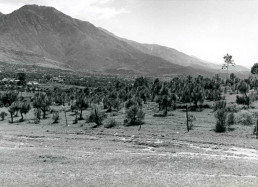
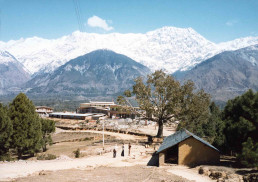
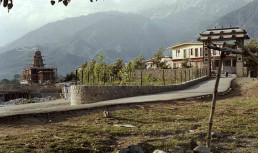
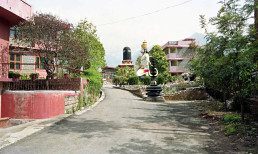
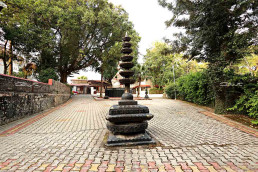
So much thought went into making the ashram self-sufficient. The nourishing touch of Pujya Gurudev was evident when the goshala, the cowshed, was set up in March 1989. Early days in Sidhbari meant tea with tinned milk powder. But that changed when the goshala with the cows and their tinkling bells became part of the ashram. Now fresh milk and the soothing moos of cows add to the sweet, serene joy inside Chinmaya Tapovan.
The newer buildings in Chinmaya Tapovan ashram are embellishing its ancient spiritual objectives.The new auditorium, Chinmaya Shatabdi Sabhaghar, built in the centenary year 2016 with a capacity to seat 670 people, resounds with the joy of many auspicious pujas and celebrations. Its open terrace where the Sidhbari skies glide over the meditative Dhauladhar mountain peaks unfolds the power of collective prayers during the blissful Vishnu Sahasranama Pujas.


The striking transformation in Sidhbari through the years is not just from new buildings and landmarks. The landscaping of the ashram and temple surroundings was done with aesthetic acumen by Pujya Gurudev. He gave clear instructions to Sri H.K. Madhwal, a retired forest officer, outlining the overall plan for the trees, the garden, the hedges and grass. In subsequent letters he writes: The idea of tree planting is sacred. Why not get a teak, a rose wood and a Chandan plant? Try these Brazilian Papaya seeds near the dining hall. Make seedling and then replant each.”
From the barren landscape to the green hermitage that it is now, the lush vegetation was nourished with great love and care by Sri. Madhwal after Vayuputra Veera Hanuman calmed the winds. It is wondrous to find an international mix of foliage – the California redwoods amid the deodars, camphor plants, African bamboo, and Australian eucalyptus. There is a vitalizing fragrance of a variety of exotic blooms of jasmine, lilies, champa, chrysanthemums, gardenias, and of course, the beautiful roses that Gurudev loved.
Chinmaya Tapovan is a spiritual nandavana where the splendor of Nature is undisturbed by the progress planned with care.
A list of buildings and the year of construction
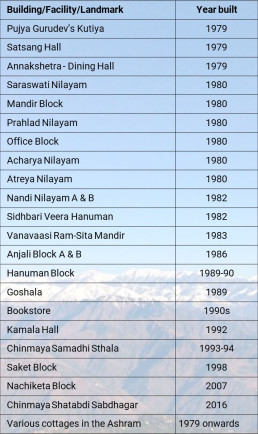

Aerial view of the land at Sidhbari
Navigation
Next Topic
Pahadi Upliftment
Pujya Gurudev used to describe true love as a dynamic giving, not a passive taking. One of his main objectives in starting the ashram at Sidhbari was to uplift…
Home Page
Sidhbari Ashram
Chinmaya Tapovan ashram in Sidhbari shines as the crest-jewel of Chinmaya Mission where the Grace of the Guru awakens the thirst for Knowledge ripened with devotion.
Previous Topic
Spiritual Camps
Sidhbari is synonymous with Pujya Gurudev’s unforgettable spiritual camps. He would say: "It is absolutely necessary for spiritual Sadhaks to dry-dock to a…
